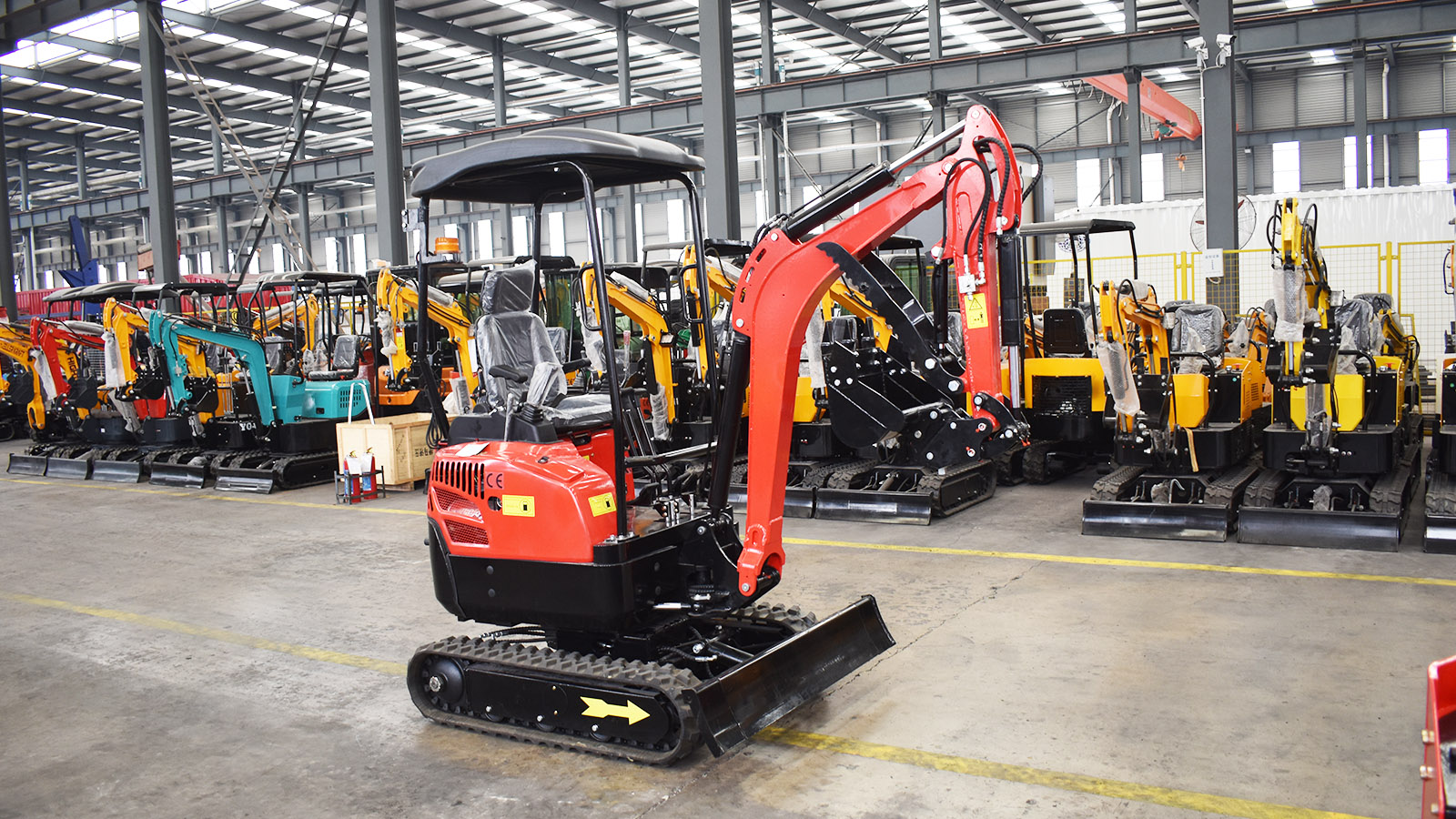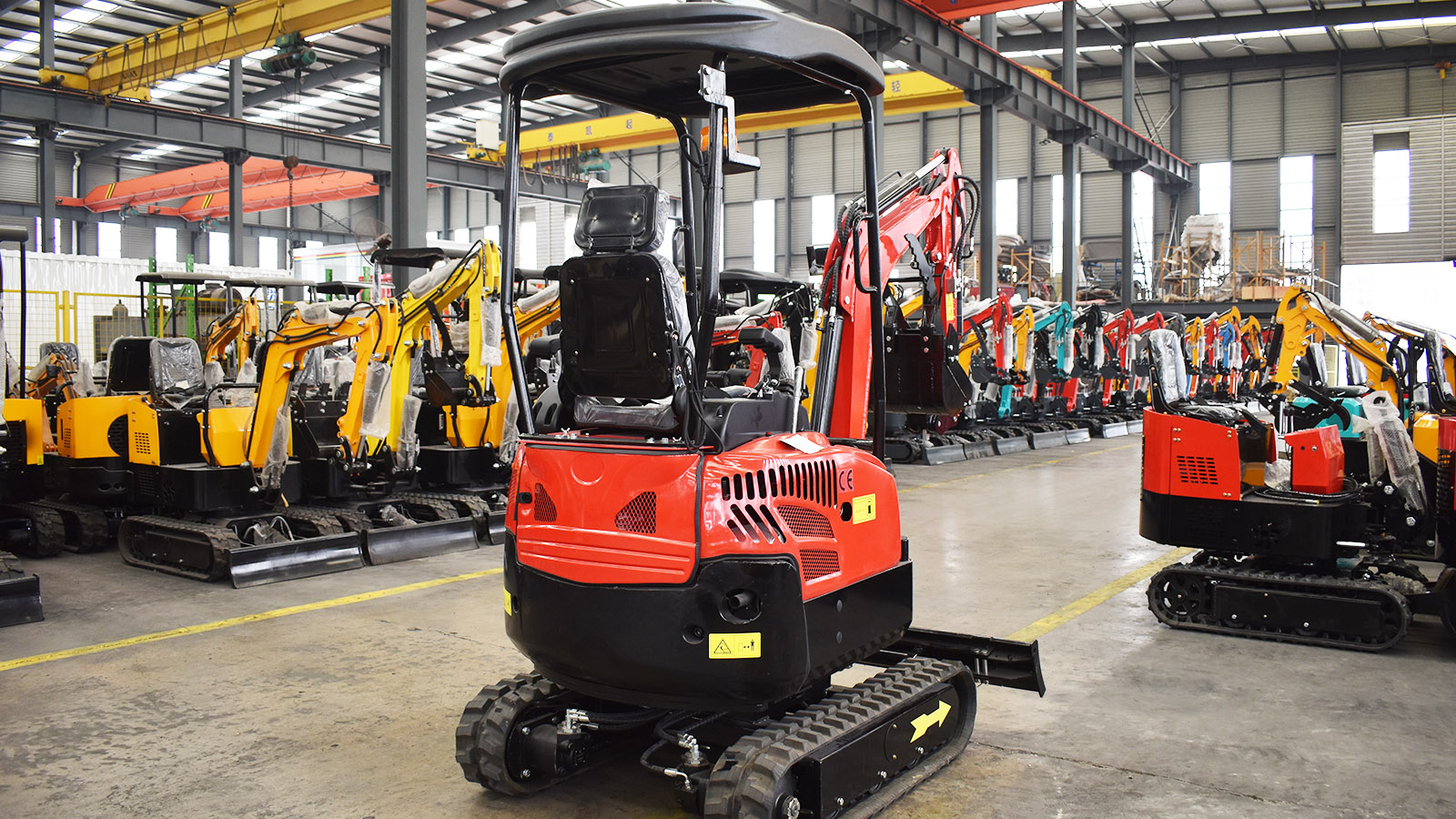Digging Safely: Essential Safety Precautions for Mini Excavator Operation
Mini excavators, while remarkably versatile and efficient, pose significant safety risks if operated improperly. Their compact size belies their power, and the complex hydraulic systems and heavy attachments demand careful attention. Whether you're a seasoned professional or a first-time operator, understanding and adhering to strict safety precautions is paramount to preventing accidents and injuries. This article outlines the critical safety considerations for operating a mini excavator, covering pre-operation checks, operational procedures, and post-operation measures.
Pre-Operation Safety Checks: Ensuring a Safe Start
Before even starting the engine, a thorough pre-operation inspection is crucial. This step helps identify potential hazards and ensures the machine is in safe working condition.
Walk-Around Inspection:
Visual Inspection: Conduct a comprehensive visual inspection of the entire machine, checking for leaks (hydraulic fluid, engine oil, coolant), damage (cracks, dents, loose components), and wear (hoses, tracks, attachments).
Attachment Inspection: Verify that all attachments (buckets, breakers, augers) are securely fastened and in good working order. Inspect the quick coupler for proper engagement.
Track/Tire Inspection: Examine the tracks or tires for damage, wear, and proper tension/inflation.
Glass and Mirrors: Check for cracked or broken glass and ensure mirrors are clean and properly adjusted.
ROPS/FOPS: Verify that the Roll-Over Protective Structure (ROPS) and Falling Object Protective Structure (FOPS) are intact and properly installed.
Fluid Level Checks:
Engine Oil: Check the engine oil level and ensure it is within the recommended range.
Hydraulic Fluid: Inspect the hydraulic fluid level and look for signs of contamination or leaks.
Coolant: Check the coolant level and ensure it is adequate.
Fuel: Ensure the fuel tank is adequately filled.
Control and Function Tests:
Control Levers and Pedals: Test all control levers and pedals to ensure they operate smoothly and respond correctly.
Hydraulic Functions: Test all hydraulic functions (boom, arm, bucket, swing) to ensure they operate smoothly and without unusual noises or vibrations.
Warning Systems: Test all warning systems (lights, horns, alarms) to ensure they are functioning properly.
Emergency Stop: Test the emergency stop function to ensure it works correctly.
Site Assessment:
Underground Utilities: Before digging, always contact local utility companies to identify and mark underground utilities (gas lines, water pipes, electrical cables).
Overhead Power Lines: Be aware of overhead power lines and maintain a safe distance.
Ground Conditions: Assess the ground conditions for stability and potential hazards (soft ground, slopes, obstacles).
Work Area Clearance: Ensure the work area is clear of personnel and obstructions.
Weather Conditions: Be aware of weather conditions (rain, wind, snow) that may affect operation.
Operational Safety Procedures: Maintaining Control and Awareness
During operation, maintaining constant awareness and adhering to safe operating procedures is crucial.
Personal Protective Equipment (PPE):
Hard Hat: Always wear a hard hat to protect against falling objects.
Safety Glasses: Wear safety glasses to protect against flying debris.
Safety Boots: Wear steel-toed safety boots to protect your feet.
High-Visibility Clothing: Wear high-visibility clothing to ensure you are visible to others.
Hearing Protection: Wear hearing protection in noisy environments.
Gloves: Wear appropriate gloves to protect your hands.
Safe Operating Practices:
Seatbelt: Always wear the seatbelt when operating the machine.
Smooth Movements: Operate the controls smoothly and avoid sudden movements.
Load Capacity: Never exceed the machine's load capacity.
Swing Radius: Be aware of the machine's swing radius and ensure no one is within the swing area.
Slope Operation: Operate the machine on slopes with caution, avoiding steep inclines and declines.
Travel Speed: Maintain a safe travel speed and avoid excessive speed.
Attachment Awareness: Be aware of the position and movement of attachments.
Communication: Use hand signals or two-way radios to communicate with other workers.
No Passengers: Never allow passengers on the machine.
Digging Safety:
Proper Digging Techniques: Use proper digging techniques to avoid tipping the machine.
Spoil Pile Placement: Place spoil piles a safe distance from the excavation to prevent cave-ins.
Trench Safety: If working in a trench, ensure it is properly shored or sloped to prevent collapse.
Utility Awareness: Be extremely cautious when digging near underground utilities.
Spotter: Use a spotter when operating in confined spaces or near obstacles.
Shutdown and Parking:
Safe Parking Location: Park the machine on level ground, away from traffic and obstructions.
Attachment Placement: Lower the attachment to the ground and disengage the hydraulic system.
Engine Shutdown: Allow the engine to idle for a few minutes before shutting it down to cool.
Parking Brake: Engage the parking brake.
Key Removal: Remove the key to prevent unauthorized operation.
Post-Operation Safety Measures: Maintaining the Machine and Site
After completing the work, proper post-operation measures are essential for maintaining the machine and ensuring site safety.
Machine Inspection:
Inspect the machine for any damage or leaks that may have occurred during operation.
Clean the machine, removing dirt and debris.
Maintenance:
Perform routine maintenance, such as greasing and fluid level checks, as required.
Address any identified maintenance issues promptly.
Site Cleanup:
Clean up the work area, removing debris and spoil piles.
Ensure the site is left in a safe condition.
Reporting:
Report any accidents, incidents, or near misses to your supervisor.
Document any maintenance issues or repairs.
Emergency Procedures:
Know Emergency Contacts: Keep a list of emergency contacts readily available.
First Aid Kit: Ensure a first aid kit is available on site.
Fire Extinguisher: Keep a fire extinguisher readily available.
Emergency Shutdown: Know how to use the emergency shutdown function.
Evacuation Plan: Have an evacuation plan in place in case of an emergency.
Conclusion:
Operating a mini excavator safely requires a combination of knowledge, skill, and adherence to strict safety precautions. By conducting thorough pre-operation checks, following safe operating procedures, and implementing post-operation measures, operators can minimize the risk of accidents and injuries. Regular training, ongoing safety awareness, and a commitment to safe work practices are essential for ensuring a safe and productive work environment. Remember, safety is not an option; it's a necessity.
Post time:Sep-25-2020



